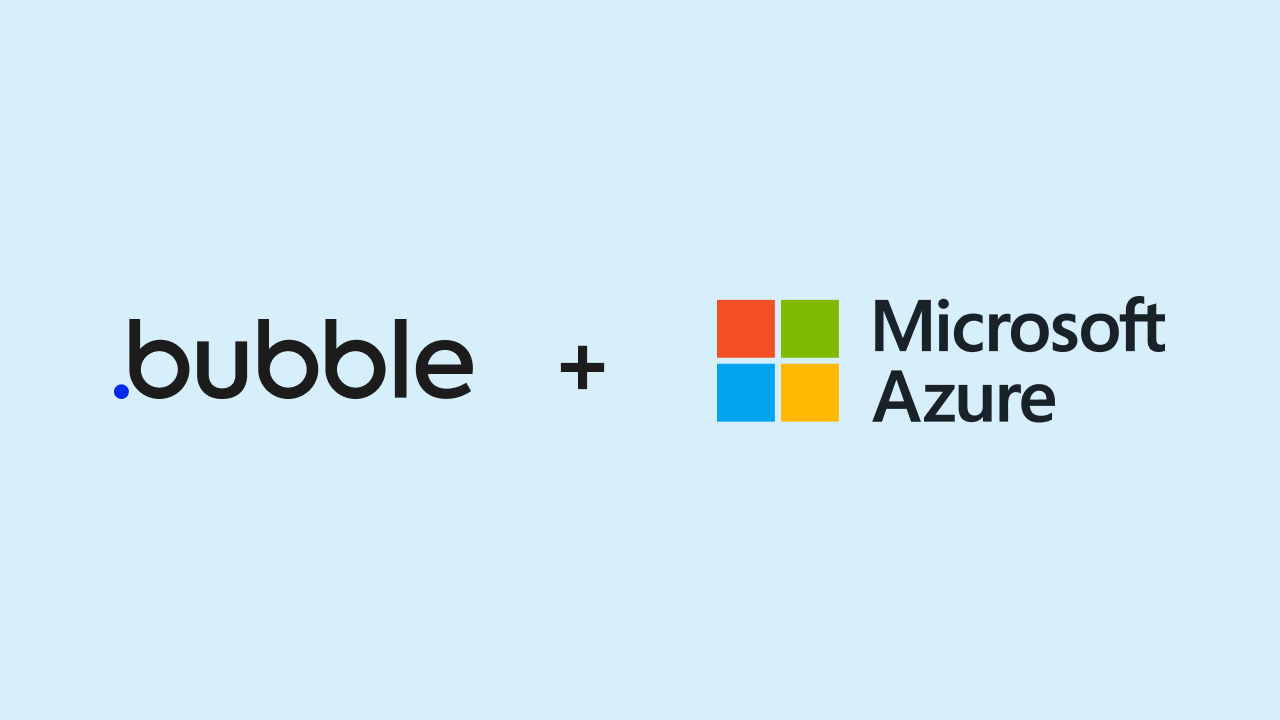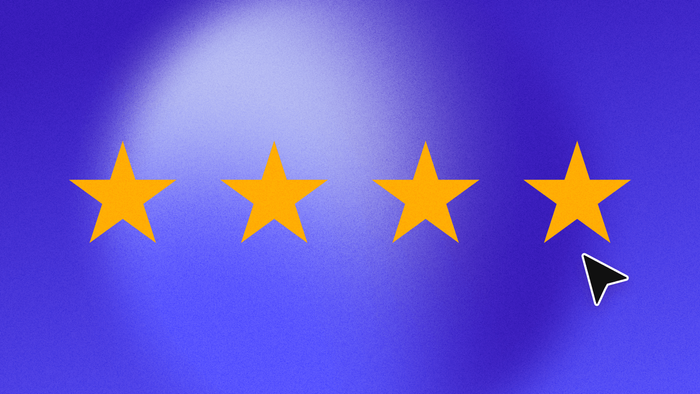Bubble has always been driven by a mission to make technology more accessible and help anybody bring their idea to life. So it will come as no surprise that we’re big fans of generative AI, which is powering automation, content creation, personalization, and productivity across basically all language-based tasks.
OpenAI’s models — and ChatGPT’s intuitive chatbot interface — are putting the power of GenAI into more people’s hands than ever before. The combination of no-code and GenAI tools like ChatGPT and GPT-3.5-Turbo makes it easy to go from an idea to a powerful, web-based application — fast.
To that end, we couldn’t be more excited to announce that the official Microsoft Azure OpenAI Service Bubble plugin is now available for businesses building on Bubble. It’s the best way for them to connect their Bubble app to OpenAI’s AI models and harness the power of artificial intelligence for text-based tasks.
Now it’s even faster and easier to build cutting-edge generative AI apps in Bubble.
Why should you use the Azure OpenAI Service Bubble plugin?
Microsoft Azure OpenAI Service — the creator of this Bubble plugin — makes it possible for businesses to leverage OpenAI's powerful language models, including GPT-3.5-Turbo and ChatGPT, via the Azure OpenAI Service API. These models are perfect for content generation, summarization, semantic search, and a growing array of other language-based tasks. If you’ve used ChatGPT at all, you know how easy it is to adapt the technology to a wide variety of personal and business uses.
The Azure OpenAI Service Bubble plugin adds the magic of no-code into the mix, eliminating the need to rely on the API Connector. That makes it perfect for both non-technical and technical users alike, so you can bring your company's AI app to life with a top-notch front-end experience built in Bubble.
This particular Bubble plugin is the fastest, easiest, and most secure way to connect your Bubble apps to Azure OpenAI Service without writing any code. Use it to:
- Connect your Azure OpenAI Service account
- Send and receive data from OpenAI’s models, backed by the security, compliance and enterprise capabilities of Azure
- Tweak API parameters to get the best results for your application
- Set up GPT-powered apps without writing code
Plus, this Bubble plugin gives you all the capabilities of OpenAI’s models backed by the security of Microsoft Azure. Azure OpenAI Service co-develops the APIs with OpenAI, ensuring full compatibility and bringing all that functionality and security to your Bubble apps.
How does the Microsoft Azure OpenAI Service Bubble plugin work?
This plugin lets you take advantage of Microsoft's Azure OpenAI Service Completions API to develop chatbots, build productivity tools, and create personalized content on the fly without needing any coding experience.
The fastest way to start tinkering is to use this brand-new, ready-to-use Bubble template that lets you create a ChatGPT clone in no time. You can also add the plugin to your existing apps or apps built from scratch. But no matter what you’re building, you’ll need to follow these steps:
- Create Microsoft Azure account and apply for Azure OpenAI Service. You’ll also need to deploy one of the models. (Here’s how to do that.)
- Head to the Bubble Marketplace and download the official Microsoft Azure OpenAI Service Bubble plugin.
- Set up your API key and endpoint. Head to the Azure portal, search for “openai,” and select “Azure OpenAI Service” from the results. Choose your resource, then copy the API key and endpoint from the “Keys and Endpoint” section.
Visit your Bubble app’s plugins tab, then click the Azure OpenAI Service plugin to configure its settings. Paste your API key and endpoint into the corresponding text boxes. - Set up your deployment. Back in your Azure portal, navigate to “Model Deployments” and click “Manage Deployments” to get to Azure OpenAI Studio. Copy the name of your deployment. Paste the deployment name into the appropriate text boxes in your Bubble plugin setup.
For a deeper dive into all the steps above, check out the full setup guide.
Ways to use Azure OpenAI Service in your Bubble app
The sky is the limit. GPT models can power applications that do things like draft documents, write computer code, simulate game characters, or add a natural language interface to your existing software.
Here are a few more ideas to get your creative juices flowing:
- Develop a chatbot trained on your own business data to answer customer questions about your company’s products, services, policies, and more.
- Build productivity tools to give your workflow a boost. (OpenAI’s models are great for content creation tasks, like generating outlines, writing first drafts of social media posts and other short content, and creating summaries of meetings and long documents.)
- Create personalized content on the fly, like product recommendations, travel advice, and more.
The Microsoft Azure OpenAI Service Bubble plugin and complete setup guide are available now on the Bubble Marketplace. If you have a business domain email address, you can apply for Azure OpenAI Service today. (If not, fill out this form to be the first to hear from us if access opens to everyone.)
Be sure to also check out The Beginner's Guide to AI + Bubble for everything you need to get started building cutting-edge AI apps with Bubble.
Build your app on Bubble's Free plan. No need to upgrade until you're ready to launch your app.
Join Bubble





